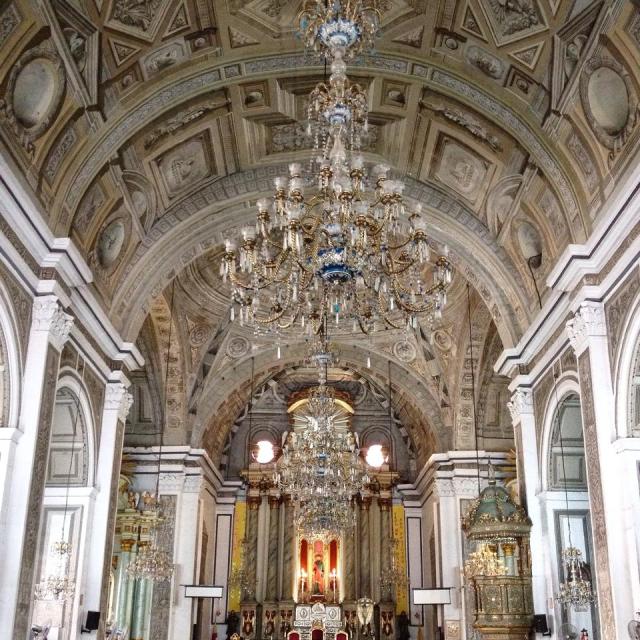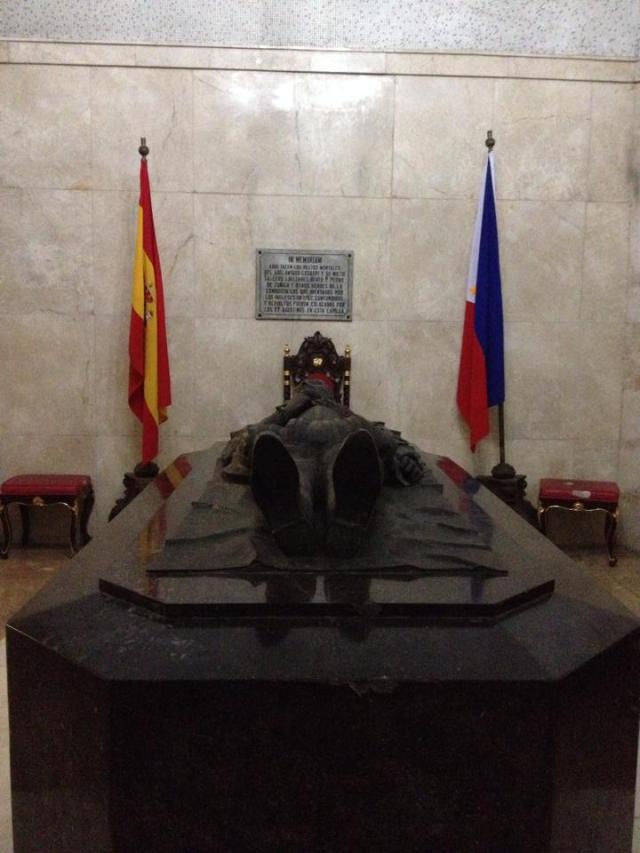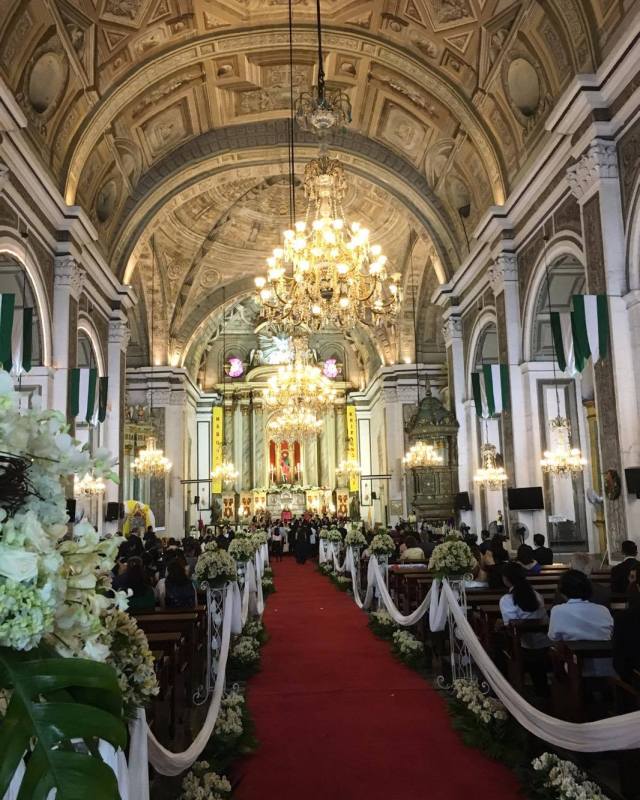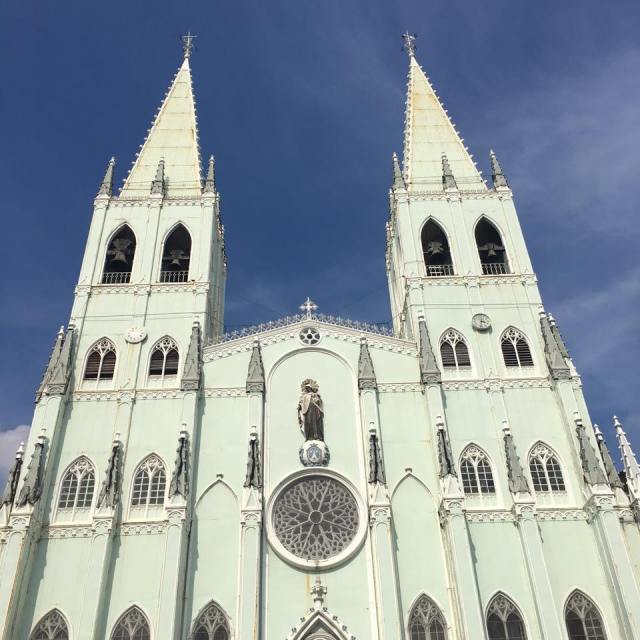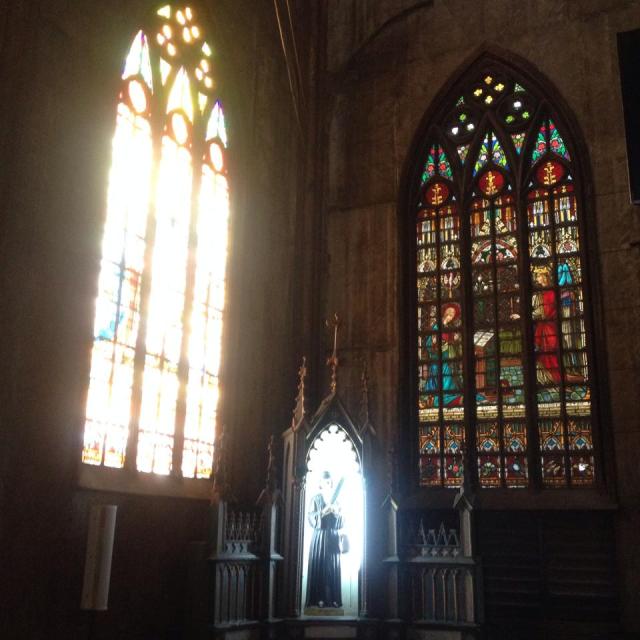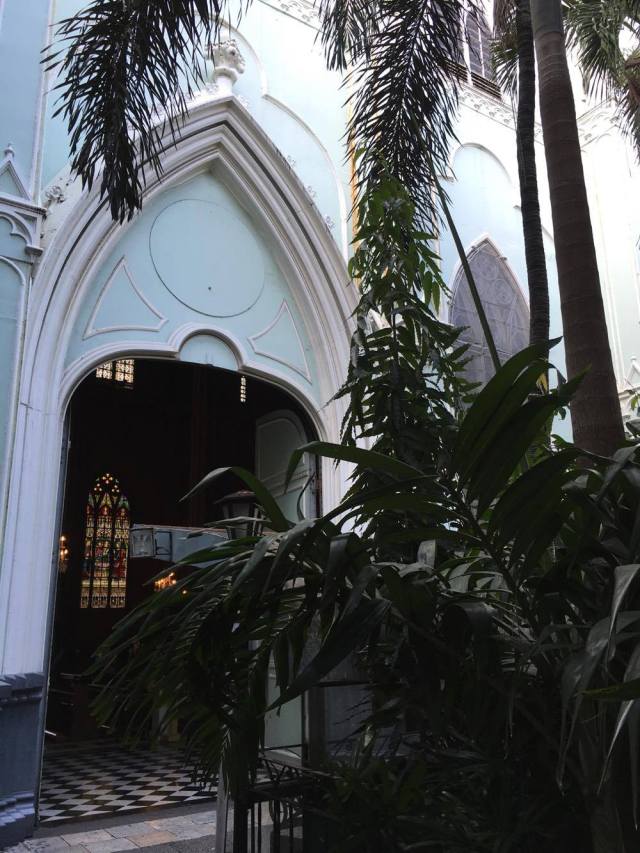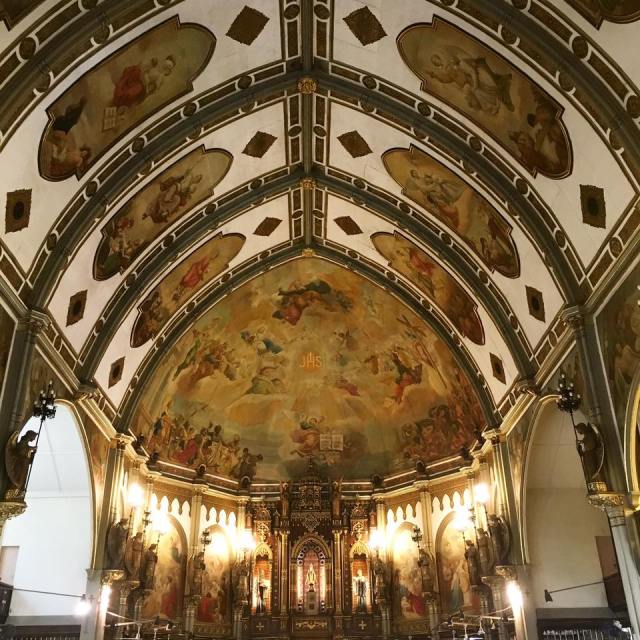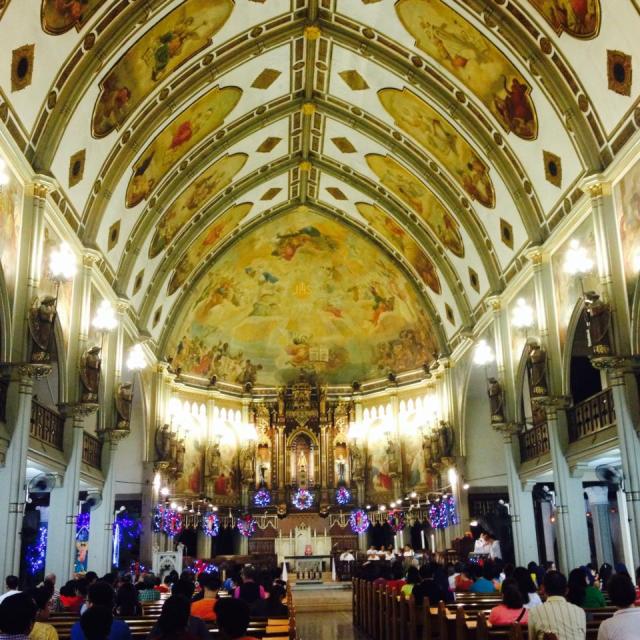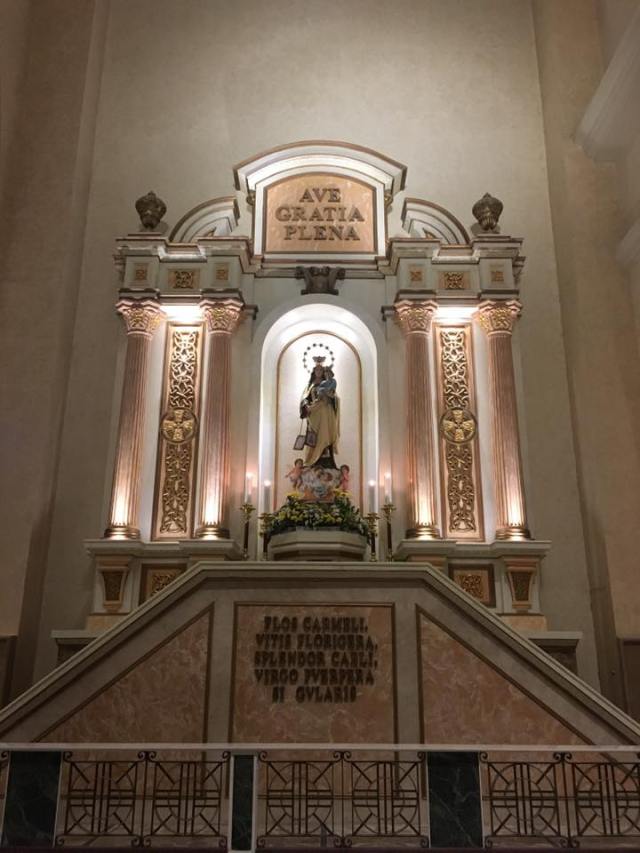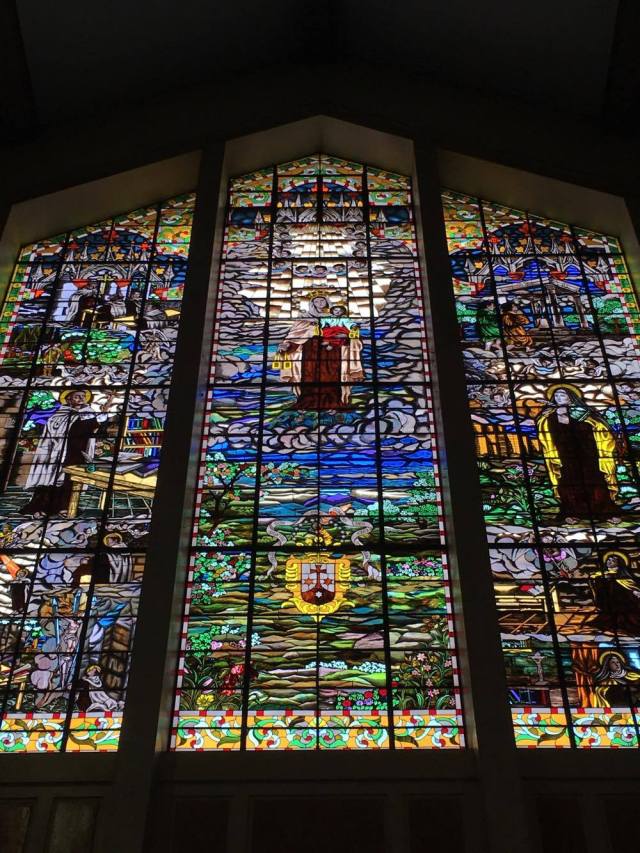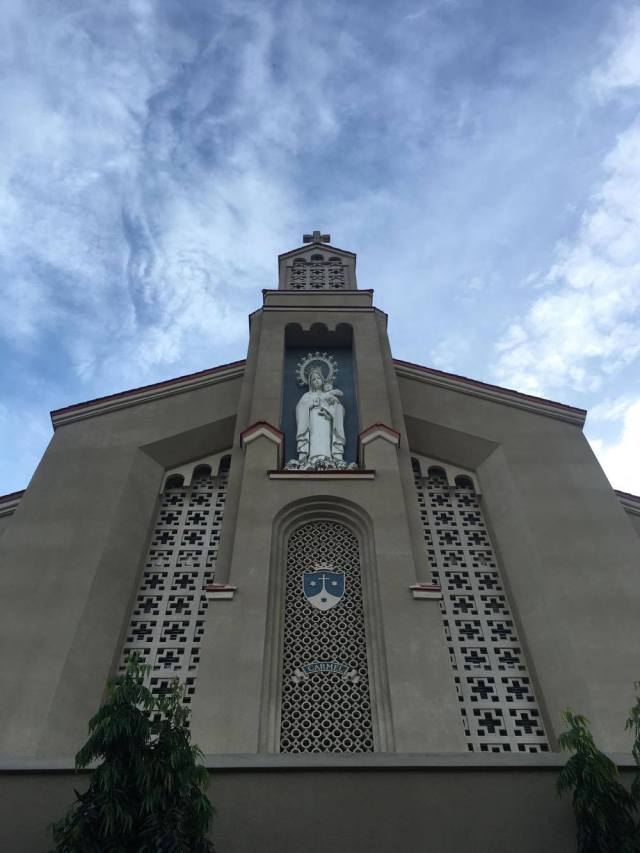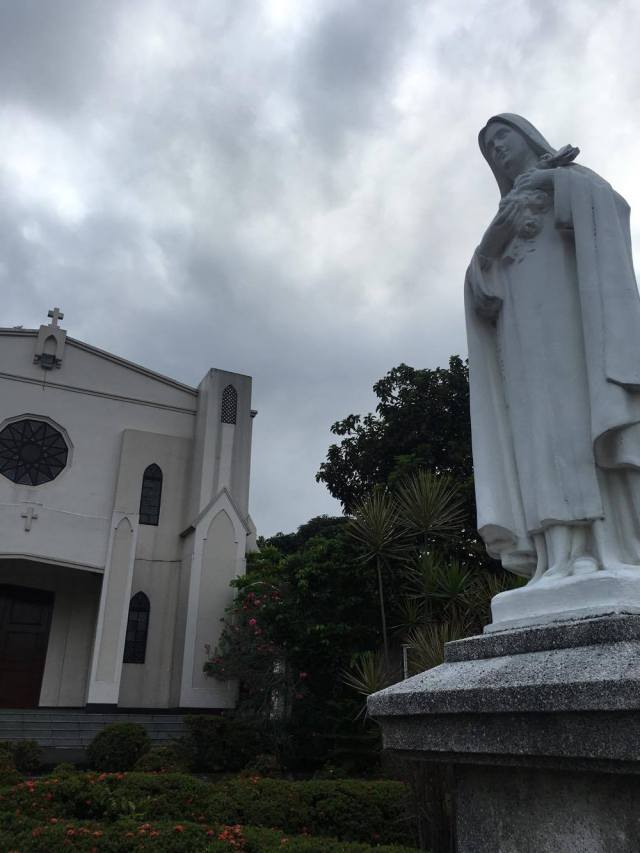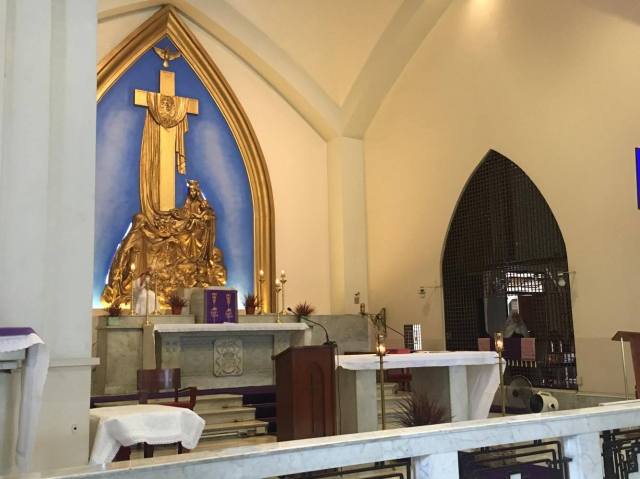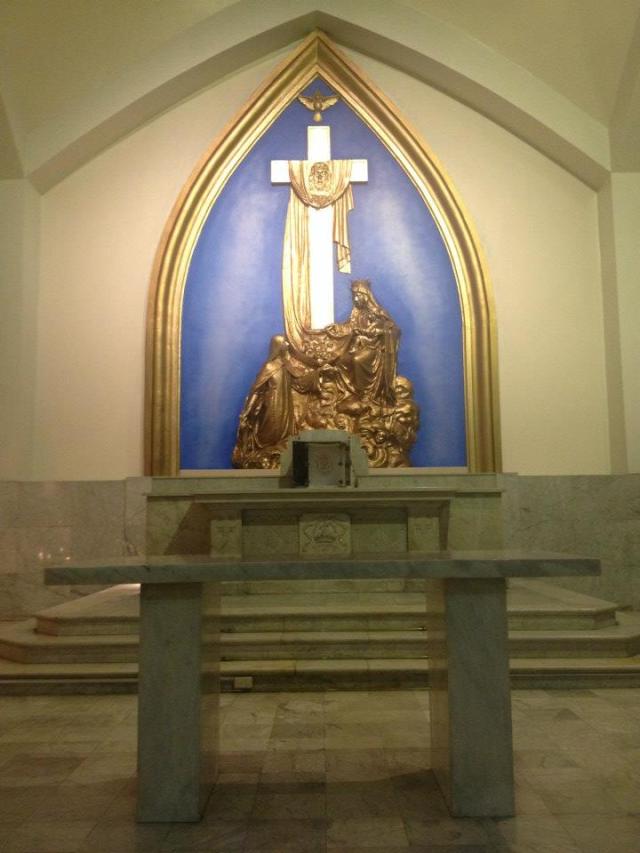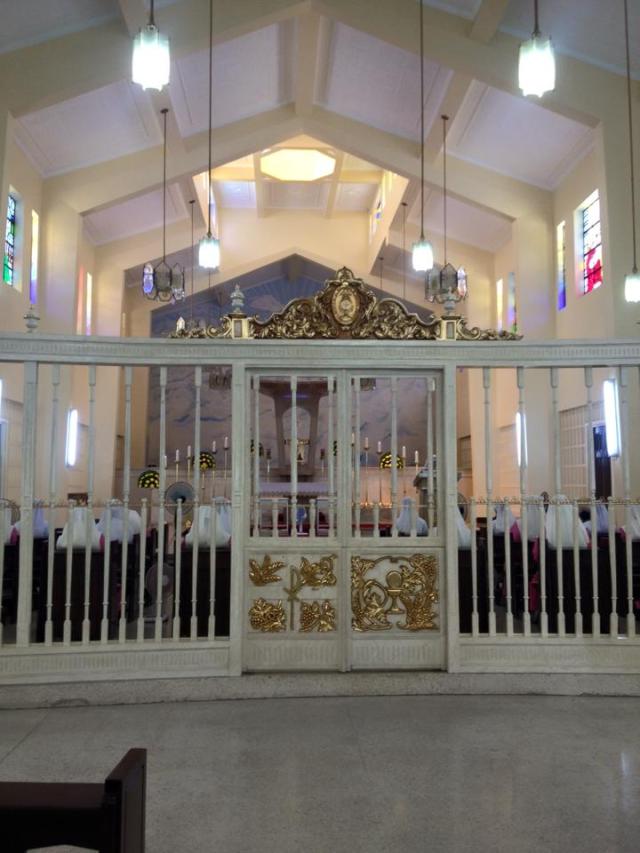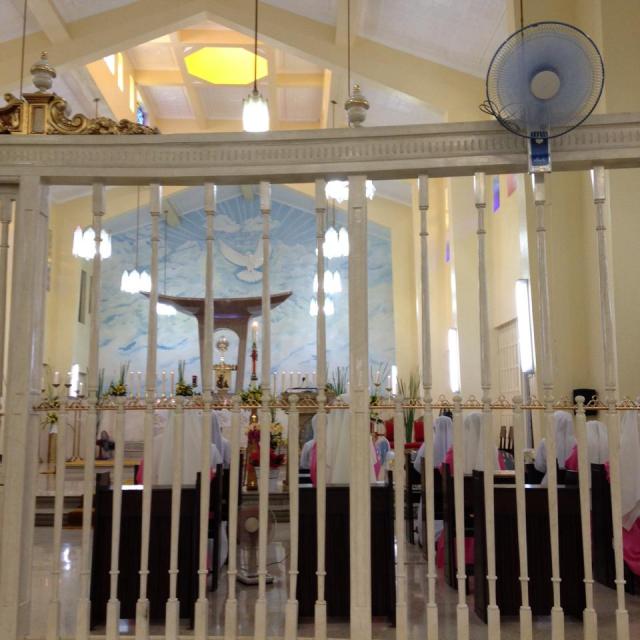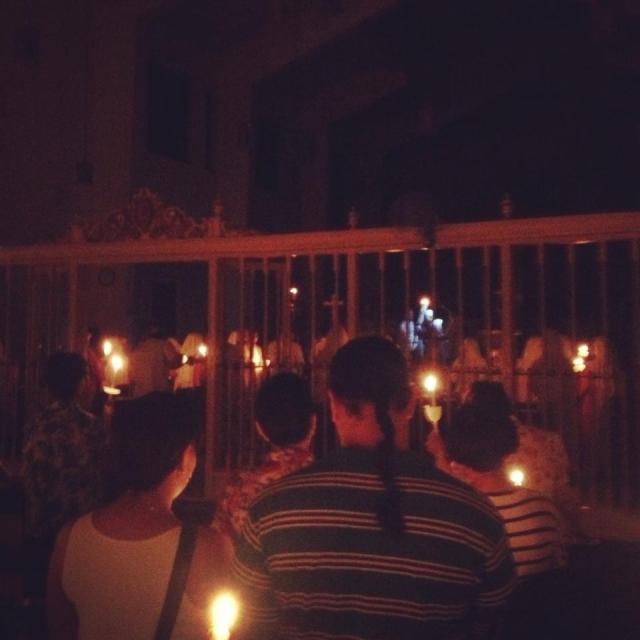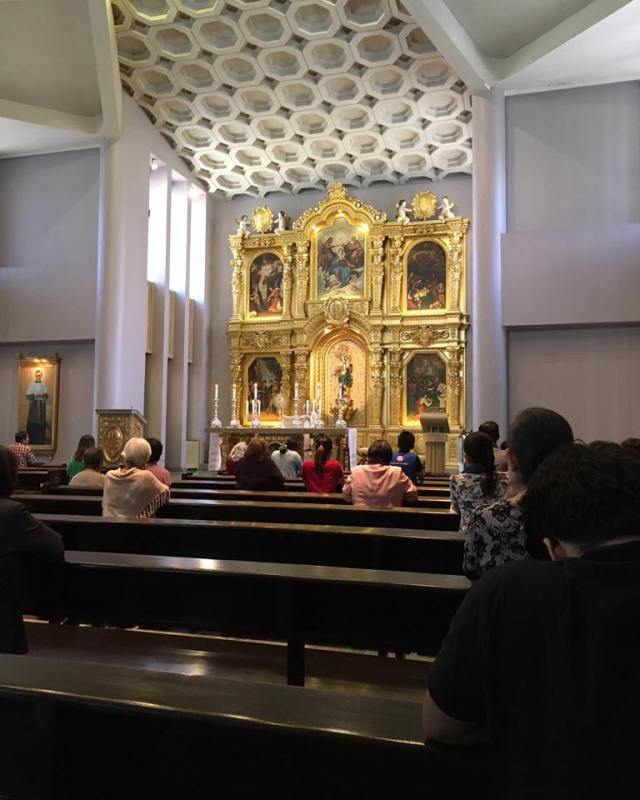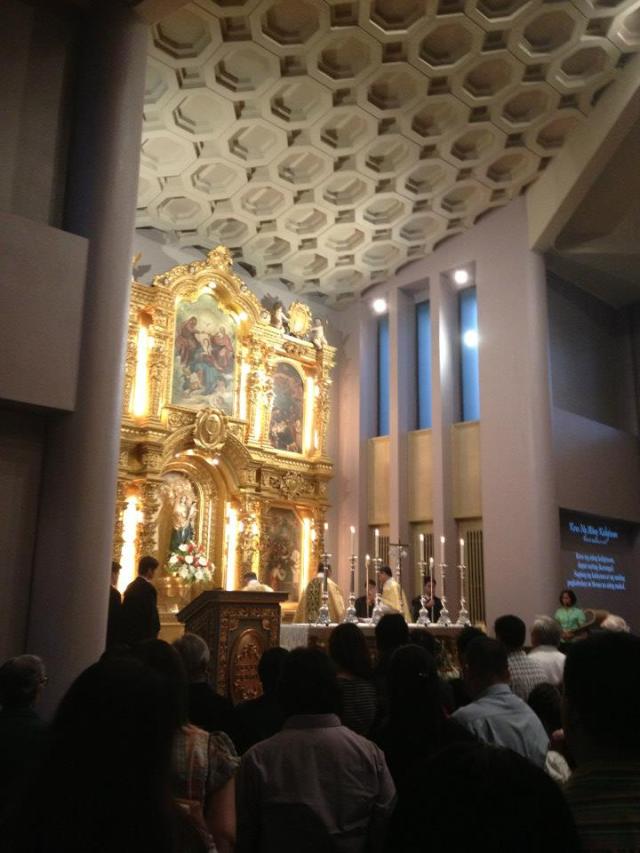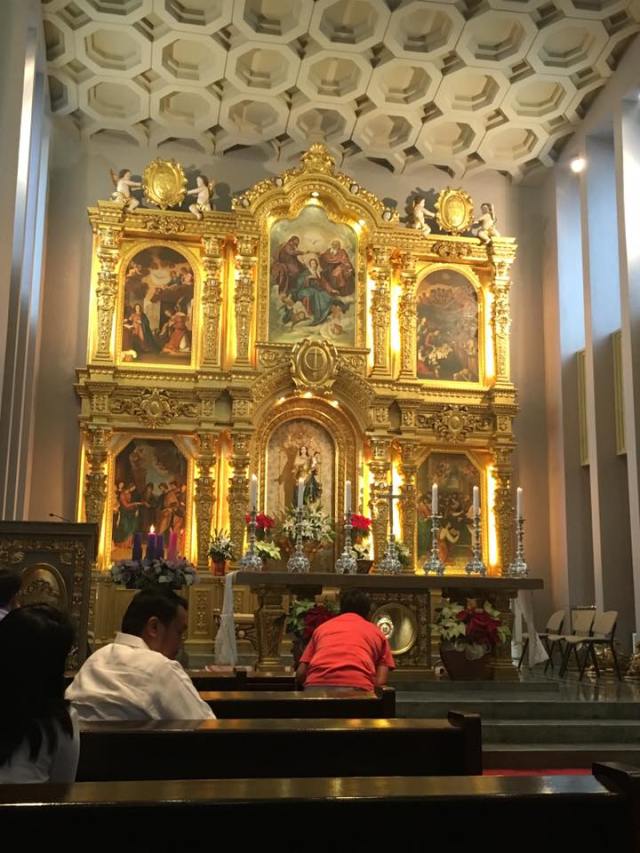
For this year’s Visita Iglesia, let’s ponder on today’s Gospel reading which relays Jesus’ rebuke of Judas’ hypocrisy and praise for Mary’s use of expensive oil on Him. In the reading, Judas questions Mary’s use of a “costly perfumed oil made from genuine aromatic nard”. The account vividly says how Mary “anointed the feet of Jesus and dried them with her hair; the house was filled with the fragrance of the oil.” Beautiful.
Judas felt and expressed that what Mary did was a frivolity and a waste, saying that the oil could have been sold and the money used for the poor. However, Jesus tells off Judas, knowing fully well his thievery, treachery but also his fakeness.
He says, “Leave her alone. Let her keep this for the day of my burial. You always have the poor with you, but you do not always have Me.”
With this account in our minds, let us prepare our Visita Iglesia itinerary around Metro Manila with the intention of visiting churches that feature Mary’s virtue: giving one’s all for the glory of God. This itinerary includes churches that celebrate the masterful craftsmanship and artistic skills generously poured into the building of these temples as well as houses of worship that painstakingly exert effort in holding solemn and beautiful liturgies with much diligence and hard work. This tour will take you to sanctuaries that did not scrimp on our Lord, unreservedly giving only the finest and best.
This itinerary will not include churches that, unfortunately, do not really apply Mary’s fastidiousness in using her hair to anoint Jesus with expensive oil. This will not feature ugly structures or places that have carnivalesque rituals that compromise beauty and sanctity for the appreciation of the majority or to accommodate what is “in”.
This itinerary will list – for both pious and non-religious reasons – churches that truly emphasize the overt and intended purpose of giving glory to God. No bargains, no shortcuts, no cheap alternatives.
Iglesia de la Inmaculada Concepción de Sta. María de San Agustín (aka San Agustín Church)
Address: Gen. Luna Street, Intramuros, Manila
It is only logical that we begin our visita iglesia at the finest example of the whole-hearted pouring of time, talent and treasure to Our Lord, the first stone church in the country and the only original structure left in Intramuros after the horrible destruction of World War 2: San Agustín. Founded in 1571, it is an historic and original link with our Faith and the centuries. Any visitor will be captivated by the church’s splendid trompe l’oeil (literally “play on the eye” in French) paintings, which were done by Italian opera background painters Giovanni Alberoni and Cesare Dibella. The paintings give the impression that the ceilings and walls are carved when in fact, they are painted.
The church and adjacent monastery (which is now an impressive ecclesiastical museum) are important witnesses of history. In a side chapel at the altar, the remains of the founder of Manila, el adelantado Miguel López de Legaspi as well as other Spanish conquistadores are kept in a tomb. Near the entrance, at the Chapel of the Assumption, are the remains of the pioneer members of the Roxas-Zobel-Ayala-Soriano clan, a revered family in the worlds of Philippine business and culture. In 1898, Governor General Fermín de Jaudenes signed the surrender of Manila to the Americans in the sacristy.
From carved Baroque retablos, to the marble tombstones that dot the church, to the very air of antiquity that one can sense inside it, San Agustín is a sanctuary of art that was preserved from the destruction of war. Its clausura gives one a sense of how Intramuros was like before – a city of monasteries and churches, all boasting of unique art styles that would have been the envy of any Southeast Asian country.
In 1993, San Agustin Church was designated as a UNESCO World Heritage Site.
Basílica Menor de San Sebastián (aka San Sebastián Church)
Address: Plaza del Carmén, Quiapo, Manila
My personal favorite among Metro Manila’s beautiful and historic churches is San Sebastián, a neo-gothic jewel tucked in a relatively quieter portion of Quiapo. It is the only all-steel and first pre-fabricated church in the country, and in Asia. Maintained by the Recollect friars, the current San Sebastián was designed by the Spaniard Don Genaro Palacios, head of city works, as requested by the cura Muy Reverendo Padre Fraile Estebán Martínez, OAR. It was completed in 1891. It is one of the best examples of how Manila during the Spanish regime was a cosmopolitan, European outpost that nurtured local skills and talent and also, employed techniques at par with those abroad.
The steel parts were bought from the Societe anonyme des Enterprises de Travaux Publiques in Brussels, Belgium and were shipped to Manila in 8 steamships. This was during the heyday of steel as a building material with the Eiffel Tower being the most famous of such metal edifices.
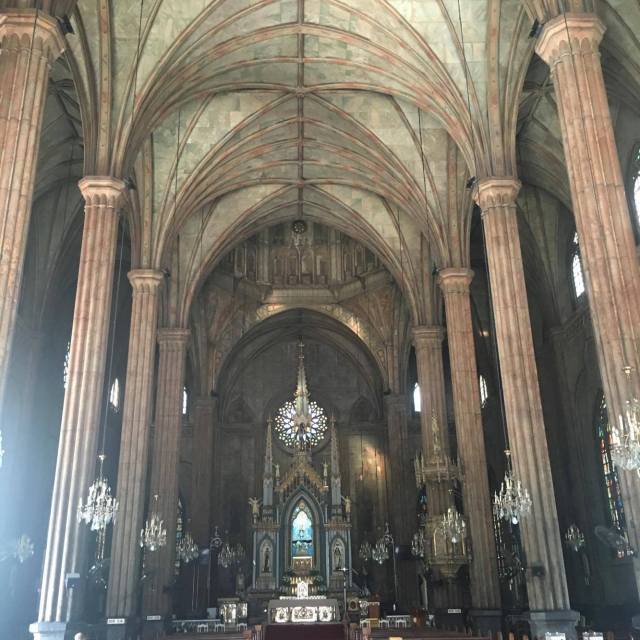
Like any Gothic structure, you are given the feeling of being lifted up to the heavens by San Sebastia’s vaulted ceiling.
Belgian architects and engineers supervised its assembly. On the other hand, the original, not to mention, intact stained glass windows were purchased from the German Henri Oidtmann Company. The interiors were painted to resemble jasper and marble by members of the Escuela de Dibujo, Pintura y Grabado. Some of the notable artists who helped decorate the church were Lorenzo Rocha, Isabelo Tampingco and Félix Martínez.
Today, the San Sebastián Basilica Conservation and Development Foundation Inc. spearheaded by Tina Paterno, leads the tedious, costly and dynamic campaign of conserving the unique building against rusting and corrosion. They are approaching the project by engaging not only conservators and material experts but also the local community as well as tourists.
You may book tours around the church (which will take you to the tower!) by contacting the foundation through their Facebook, sending them an email at savesansebastian.org@gmail.com or calling (02)708-5122.
Abbey Church of Our Lady of Montserrat (aka San Beda Abbey)
Address: Mendiola Street, San Miguel, Manila
Within walking from San Sebastián is the quaint and unassuming abbey church of the Benedictine monks, Our Lady of Montserrat, completed in 1925 by the Swedish architect George Asp. Located along a street that has witnessed countless rallies, the monks’ abbey church is an oasis of beauty and peace that is not known to many. The neo-gothic structure is beautified by paintings on its ceilings and sanctuary by two Spanish monks, Dom Lesmes Lopez, OSB and Dom Salvador Alberich, OSB. Both were formerly missionaries to Australia, thus, San Beda is also the only church in the Philippines, which features a kangaroo in its decorations!
This church, like many curiosities in Catholicism, enjoys the dual patronage of the Holy Infant as well as the patroness of Cataluña, Nstra. Sra. de Monsterrat, which is affectionately called la morenata due to its darkened color.
The church’s apse is decorated with a glorious illustration of the Apotheosis of the Most Holy Name of Jesus while at the center of the retablo made of cider wood is an image of the Santo Niño de Praga. The statues were made by the celebrated santero Maximo Vicente. It is also good to note that the church’s marble furnishings are made of Carrara marble, a bespoke Italian type of marble used on some of the world’s most famous artworks.
Although restricted from the general public, the attached abbey where the monks reside is also sanctuary of beauty. This is because among its former abbots was Dom Celestino Gusi, OSB, an aristocratic Spaniard who initiated projects that beautified the abbey.
National Shrine of Our Lady of Mount Carmel
Address: Broadway Avenue, New Manila, Quezon City
What used to be San Sebastián’s “monopoly”, this airy New Manila landmark now claims to be the foremost shrine in honor of the Queen of the Brown Scapular of Carmel.
Constructed in 1954, Mt. Carmel Church’s building was simultaneous to the establishment of the Order of Discalced Carmelite Friars in the Philippines whose pioneers were Irish and American friars. The lot chosen was a portion of Doña Magdalena Hemady’s extensive property in one of the post-war Manila’s premier land developments, New Manila. The area served as a community for pre-war Manila’s patrician families and lots of Spanish-speaking clans. Before the Carmel was built, the residents either walked to E. Rodriguez to the SVD Seminary of Christ the King, the Pink Sisters’ convent in Doña Hemady or to their actual parish of Immaculate Conception in New York. Some would also opt to take their cars all the way to the imposing Sto. Domingo in Quezon Avenue.
It is a cavernous church, a veritable temple for a queen. Its large stained glass windows are some of the best in Metro Manila, and if you go at the right time in the morning, the illuminated images are simply magical.
It recently underwent a major renovation that has since removed the soot and replaced the seeming dreariness and sobriety of the place with a brighter and friendlier vibe. Today, a baldacchino crowns the sanctuary. Among Metro Manila’s postwar churches, Mt. Carmel’s processional images are some of the better ones with the Santo Entierro placed in a dark wooden carriage.
Carmel of Saint Thérèse of Lisieux
Address: Gilmore Avenue, New Manila, Quezon City
Perched on a small hill on the end of Gilmore (and now overshadowed by a humongous condominium) is the charming chapel of the Carmel of Saint Thérèse of Lisieux, which is home to a small community of cloistered Carmelite nuns. You only know they’re there as you hear the sweet seraphic voices of the nuns as they sing hidden from view behind the grills.
It was established by French missionary cloistered nuns from Indochina in 24 November 1926 with the aid of the generosity of the Spanish and Filipino families of New Manila. During the daily morning Masses here, the liturgies are never rushed and the hymns that the nuns sing truly lift up the spirit. Here, rites are never fancy or convoluted but always somber and solemn, giving one the serenity one looks for whenever one is in need of some respite from the troubles of the world.
St. Joseph’s Convent of Perpetual Adoration (aka Pink Sisters’ Convent)
Address: Doña Hemady cor. 11th Street, New Manila, Quezon City
New Manila, being the quiet, tree-lined neighborhood that it is, is home to numerous religious houses, churches, chapels and houses of formation. One of these is St. Joseph’s Convent of Perpetual Adoration, which is home to the Pink Sisters, a cloistered order of nuns who are better known by the hue of their habit than their rather kilometric official name: Sister Servants of the Holy Spirit of Perpetual Adoration.
The first Pink Sisters were a mix of Germans and Americans and they arrived in the Philippines in 1923. The New Manila convent was established at the invitation of the Philippines’ first Filipino Cardinal, then Archbishop of Manila Rufino Cardinal Santos. The other convents are located in Baguio, Cebu, Davao, Aklan and Tagaytay.
Today, there are 26 sisters in New Manila, which is the Pink Sisters’ only house of formation (in years past, all convents were houses of formation) and it is an abode for those who seek to participate in Liturgies that are most solemn and sober. In this chapel too, Jesus is present daily, 24 hours a day, in the exposed Blessed Sacrament, which a sister accompanies and looks after always. Our Lord is never left alone.
Sancta Maria Stella Orientis Oratory
Address: St. Josemaría Escrivá Drive, Ortigas Center, Pasig
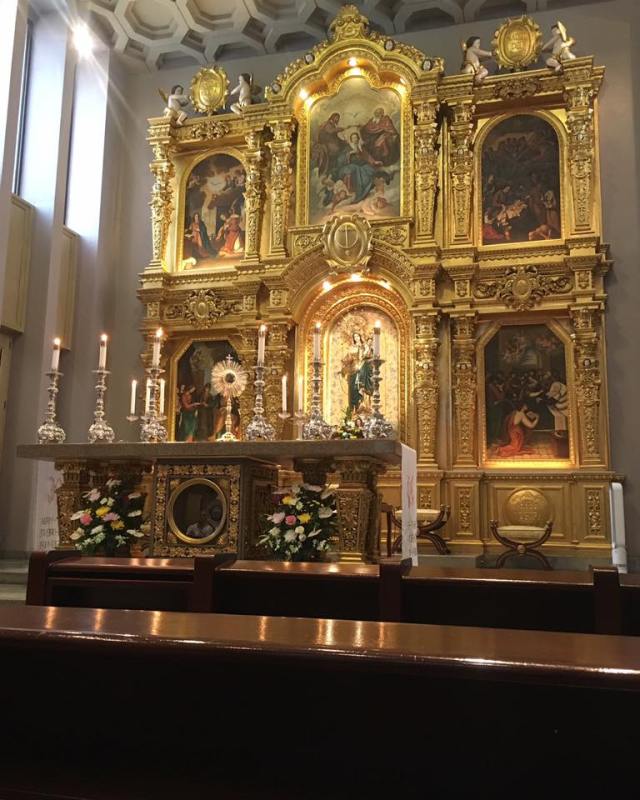
The sumptuous altar prepared for the weekly Benediction and Exposition on Fridays after the noon Mass.
Our tour ends at an oratory of the Prelature of Opus Dei, the Sancta Maria Stella Orientis Oratory. Named after Our Lady, Star of the Sea, this airconditioned university chapel is witness to some of the most solemn and superbly celebrated Masses in the whole of Metro Manila. It was blessed on the Solemnity of the Assumption of the Blessed Virgin Mary, 15 August 1992, making it the newest among the churches I listed here.
Respectful of the General Rubrics of the Roman Missal, the priests of Opus Dei celebrate Masses here that are bereft of the noise and clutter of other parish priests. Simple and straight to the point, what they do not scrimp on is beauty and solemnity. With an almost gaudy retablo painted in gold, the priests, properly vested with lace amices and exquisite chasubles, do not rush the Masses here and the hymns sung by its choir reveal the richness of our Catholic heritage.
Communion here is given as communicants kneel. To ensure that utmost respect is rendered to our Lord, the oratory requires visitors to wear proper clothes, barring anyone wearing slippers, shorts and sleeveless attires.
Here, we can hear the Judases who would screech and complain.
But we can only expect the Lord rebuking them for their folly.

